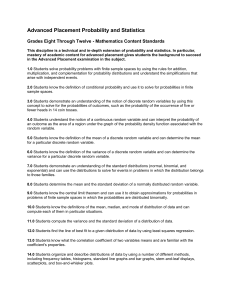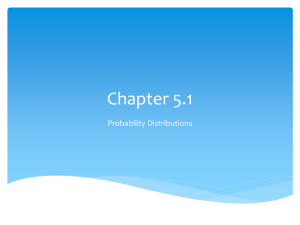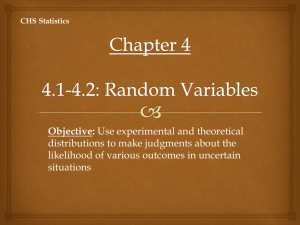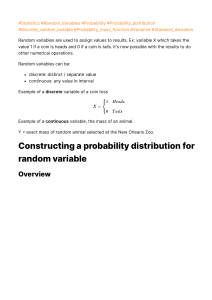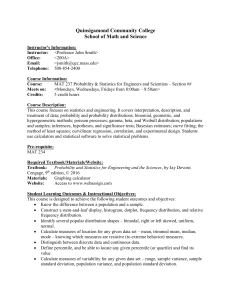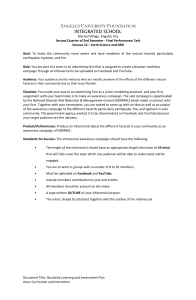Document 14147163
advertisement
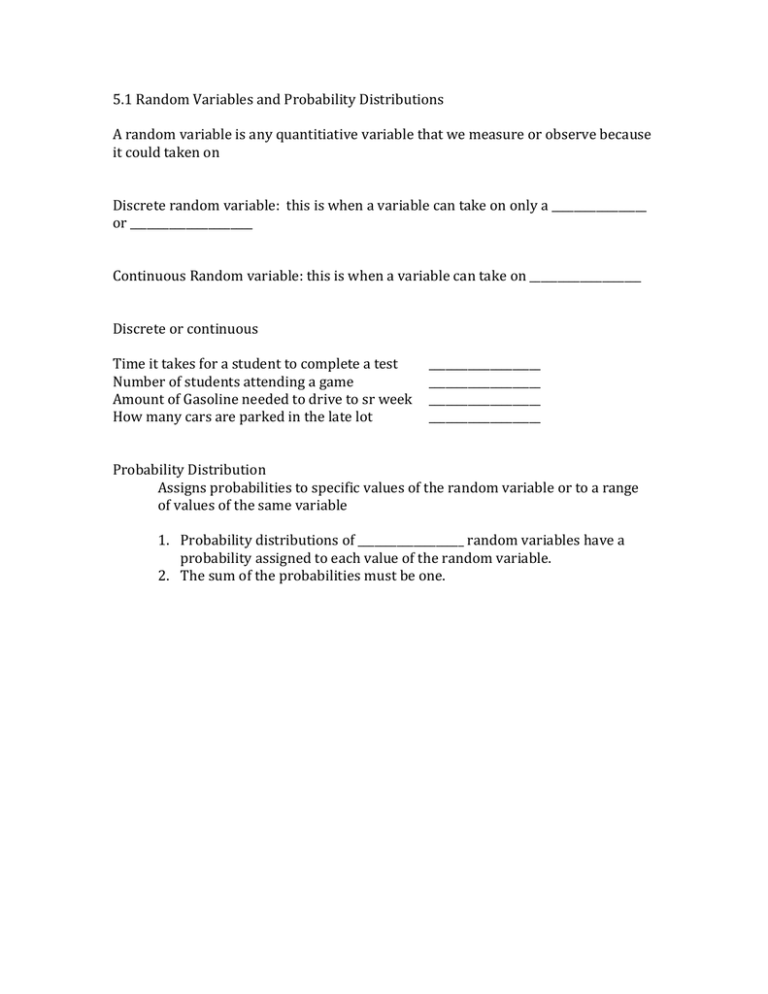
5.1 Random Variables and Probability Distributions A random variable is any quantitiative variable that we measure or observe because it could taken on Discrete random variable: this is when a variable can take on only a _________________ or ______________________ Continuous Random variable: this is when a variable can take on ____________________ Discrete or continuous Time it takes for a student to complete a test ____________________ Number of students attending a game ____________________ Amount of Gasoline needed to drive to sr week ____________________ How many cars are parked in the late lot ____________________ Probability Distribution Assigns probabilities to specific values of the random variable or to a range of values of the same variable 1. Probability distributions of ___________________ random variables have a probability assigned to each value of the random variable. 2. The sum of the probabilities must be one. The following is a probability distribution for if the number of times a buyer saw an infomercial affected their likelihood to buy a product # of times 1 2 3 4 5+ buyers saw an infomercial Percentage 27% 31% 18% 9% 15% of buyers For a quantitiative variable we can always calculate an average and a standard deviation. Mean of a discrete population probability distribution µ = Σx ⋅ P(x) This will be the ______________________ value of x. Standard deviation σ = Σ(x − µ )2 ⋅ P(x) Using the above data and your calculator, complete the following table x − µ X (# of P(x) xP(x) (x − µ )2 (x − µ )2 ⋅ P(x) viewings)

